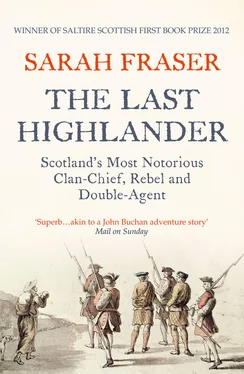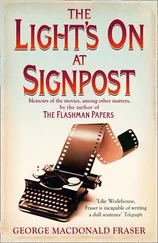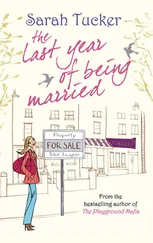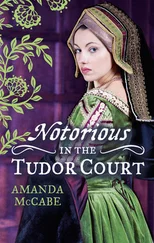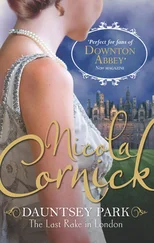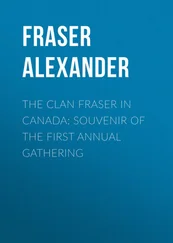* * *
Simon escaped Eilean Aigas and haunted the hill country, moving and hiding from glen to glen. At the end of the year, Simon sent his father to safety from the Stratherrick estates, to Thomas’s brother-in-law, the MacLeod chief, at Dunvegan Castle on the west coast of the Isle of Skye. The Murrays now had about 600 soldiers – government and Murray men – in the Inverness area. Lord James Murray wrote to his father, Tullibardine: ‘Except to satisfy you, I confess I expect neither honour nor credit by turning a plunderer.’ Atholl and Tullibardine worried that Lord James did not have the stomach for the fight to waste Fraser country and reduce the clan to submission.
Tullibardine had failed to secure from the Privy Council a Commission of Fire and Sword, the licence he needed that allowed him to eliminate the Frasers. Some Councillors ‘were opposing the case’, Dollery informed his master, ‘as judging it not proper to give a direct commission to one clan over against another, and others said that it was not agreeable to law either’. The government read this principally as a clan feud. The central authorities manipulated feuds as a control valve to maintain a power balance in the region, but were wary of elevating one to a matter of national security. It might all backfire. They all lived with the national outrage after Glencoe.
In Inverness, even the weather conspired to conceal Simon. ‘Severe frost and snow’ filled paths and tracks. The Murray soldiers shirked from going out on forays. No matter how much the Marquis of Atholl offered in lures and bribes, officers could obtain no reliable intelligence from turncoats. All his army could do was destroy the clan’s property, which, given ‘the most tempestuous weather of snow and great frosts’, brought more starvation to ordinary Frasers. Unless the country people, the poor, ‘be made to suffer for his being among them’, wrote one of Tullibardine’s officers, and those among the professional and landowning classes ‘that go along with him [be] punished in their goods’, they were sure it would be impossible to get hold of Simon Fraser. Tullibardine ordered the devastation to continue. It was futile. One officer spelled out the situation – ‘the whole country are entirely addicted to him’ and they should call a halt.
Atholl and Tullibardine would not relent. As the winter of 1697/98 ground on, it proved impossible ‘to march against them from a town that favours them … through a country that is friendly to them, and intangled with them, without being discovered’. The Murray spy network was proving a disaster. Simon’s functioned beautifully.
The Murrays subpoenaed scores of Frasers from all ranks to go south and testify against their chief. The road south led them by Blair Castle, thirty miles north of Perth. The old Marquis forced the military escorts to bring the witnesses to him and put them in his dungeons. The Lord Chancellor, the Earl of Annandale, sent tetchy letters requesting the forwarding of his witnesses. The Marquis of Atholl let the witnesses go, while he whinged that the court in Inverness, run by Brigadier Grant, was biased ‘to the prejudice of our family … It is all our enemies that has it in their hands’ – a breathtaking complaint from a man who intimidated witnesses daily and whose son manipulated the Edinburgh judiciary. Atholl asked Tullibardine to make sure the Frasers were sent back to him on their road home, ‘so that I may make them perfect what they have begun’. They know, the Marquis said, ‘they would be ruined if they did not’ appear for the Murrays, ‘which is the best argument to Highlanders’. If they ‘should fail’, he added chillingly, ‘they will still be in my power to take amends … All this has been my business night and day.’
Revenge consumed the old man. ‘I hope I have got the chief [men] of the name of Fraser who live in Stratherrick broke and divided,’ he told Tullibardine. He was determined to break Simon’s core support. Yet the Murray chief was no longer young. He carried stress in his belly, making him prone to belching and ‘gout in the stomach’. He put himself under terrible pressure to settle Simon on a gallows, before allowing himself to die a happy man.
By the spring of 1698, Atholl declared with satisfaction that ‘the estate of Lovat is altogether ruined’. Although the outlaws remained at large, the Murrays had amassed enough evidence to start their trial. Simon was cited to answer two charges: first, forced marriage and rape. Second, raising men in arms and resisting the King’s forces.
The court ‘compered’ Thomas and Simon and their followers to appear three times over the summer, with increasingly dire threats every time they declined. On 6 September 1698, the court found them guilty of the capital crime of rebellion, and they were declared forfeit in King William’s name. Tullibardine got his Commission of Fire and Sword. (The Crown prosecution refused to have anything to do with the private charge of possible marital rape.) Simon, his father and their main adherents were now ‘outlawes and fugitives frae the lawes’. They were to be ‘executed to the death … Their name, fame, memory and honours to be extinct and their armes to be riven furth and delate out of the bookes of armes.’ For the rest of time, none of their heirs could enjoy titles, positions and dignities. In effect, anything that anyone did to the Lovats and their men, since they were outside the law, would be ignored by anyone within the law. The Murrays had free rein to pursue Simon any way they chose. His family were to be wiped from the pages of history. The Lovat estates lay tantalisingly within the Murrays’ grasp.
Simon wrote to Argyll, asking that he secure a pardon from King William to let the Lovats live at peace, enjoy their estates and serve his Majesty. Someone had to control the Murrays. Argyll went to the King.
While at his brother-in-law’s castle on Skye, Simon received news that his father, Thomas, Lord Lovat, had died and been buried in the graveyard of his wife’s family. Simon could not risk bringing the body of the Fraser chief home, or honour him with the traditional huge Highland funeral and burial at Wardlaw. In hiding, Simon had no time to grieve. He believed the Atholls had hounded the old man to death. Simon now assumed the titles of MacShimidh Mor, the 11th Lord Lovat, chief of Clan Fraser – though these were worthless to a young man who was now an outlaw.
Armed with a death warrant, the Murray hunt heated up. At the head of hundreds of Athollmen and Lowland soldiers, Lord James Murray, accompanied by his brother Mungo, planned a night attack into Stratherrick where they believed Simon was hiding. ‘Having the authors of his father’s death, and of all his personal misfortunes before his eyes, he would now revenge himself in their blood, or perish in the attempt,’ Simon swore. He galloped to Stratherrick to stop more ill-treatment of his people. The hunters would become the hunted.
The Murrays struck camp for the night against a rocky crag. When they mustered the next morning, Simon calculated he had something under 300 men to their 600. Given the numerical disadvantage, a full-frontal attack would fail. Simon ordered one of his men, Alexander MacDonald, to take sixty Frasers and string them out in a thin line in front of the enemy, so they would believe his whole force faced them. Meanwhile, Simon led the rest around to their flank.
Realising late they were to be ambushed, Lord James ordered his troops to fall back towards a ‘terrible defile’, six miles in the direction of Inverness, called Allt nan Gobhar – the Blacksmith’s Burn. Alexander MacDonald guessed their goal and raced ahead of them to block the way through. The fighting men under Simon broke rank in pursuit.
Simon Fraser fought as MacShimidh, a Highland chief; not as the bewigged and breeches-clad British peer petitioning in the law courts of Edinburgh, but wrapped and belted in a plaid over the top of his linen shirt, like his ordinary kinsmen. He put a bonnet on his head, and stuck the Fraser emblem, a sprig of yew, in it. With the battle cry A’Chaisteal Dhunaidh – ‘for Castle Dounie’, and the scream of the pipes, they charged to battle. ‘Lord Lovat ran for three miles alongside them, on foot, and almost naked.’ The howling chief of Clan Fraser stampeded the government troops towards the men hidden in Blacksmith’s Burn. Drawing close, the Murrays saw what awaited them and suddenly ‘impressed with the most lively apprehensions’ of impending slaughter, most Murray men tried to surrender. Simon observed Lord James yelling at them to engage but they ‘laid down their arms and covering their heads with their plaids, cried out for quarter’. A Murray fighter came running towards them, ‘with a white handkerchief … neckcloth tied to a bludgeon, crying out for mercy’.
Читать дальше
